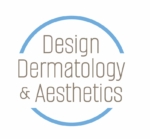Chemical Peels
Chemical peels are a skin rejuvenation treatment to reduce the appearance of aging or to treat certain skin conditions.
Chemical peels can make a dramatic improvement in the way you look. For relatively little effort, you could take years off of your appearance.
Here at Design Dermatology in Miami, Florida, you can discuss the cosmetic treatments we offer and learn if they are right for you.
What are Chemical Peels Used For?
Chemical peels are used to enhance the appearance and texture of the skin.
Skin responds to the chemical ingredients used in the various types of chemical peels. When a layer of skin is removed, the skin rejuvenates itself and builds a fresh new layer of skin cells. This results in a more youthful appearance that is devoid of the skin imperfections that were targeted.
Among other uses, peels are used for:
- Acne
- Wrinkles
- Discoloration
- Dryness
- Uneven skin tone
- Scars
Types of Chemical Peels
Cosmetic peels fall under three categories; light, medium, and deep. The variations designate how deeply the ingredients in the peel formulation penetrate the skin.
- Light chemical peel. Light cosmetic peels remove only the outermost layer of the skin, called the epidermis. This type of cosmetic peel treats dryness, fine lines and wrinkles, acne, and uneven skin tone. Most dermatologists recommend repeat treatments no more than once every two to five weeks.
- Medium chemical peel. Medium cosmetic peels penetrate to the depth of the upper layer of the dermis. Medium cosmetic peels are used to treat things like acne scars, average wrinkles, and uneven skin pigmentation brought about by sun damage or other reasons. More than one treatment may be needed to reach full effect.
- Deep chemical peel. Even with a deep cosmetic peel, the formulation will only reach a safe depth of the skin. Deep cosmetic peels may be recommended to treat older, deeper wrinkles, certain benign skin growths, or scars. Typically, only one session of a deep cosmetic peel is needed to obtain results.
Am I a Candidate?
Young adults and older adults are good candidates for chemical peels, as long as there are no underlying skin conditions that could be negatively impacted by the process. For instance, open, blistering acne breakouts would not respond well to a cosmetic peel.
Others who may not be a good candidate include anyone who:
- Has a history of overdevelopment of scar tissue
- Is pregnant
- Has chronic cold sore breakouts
- Takes certain prescription medication
Chemical peels are done in the comfort of our office. They do require some healing time, so this is not a treatment that would be appropriate to have done during your work lunch hour.
After a cosmetic peel, the skin will be red, swollen, and tender to the touch. After-care instructions include cleansing the skin gently, skipping active ingredients, skipping sun exposure, and moisturizing often.
There is typically a recovery time of up to two weeks, depending upon what type of peel you received. If you are getting a cosmetic peel to improve your appearance for a certain event, such as a wedding, you should schedule your cosmetic peel well in advance so that your skin has enough time to heal properly.
Cosmetic peels are straightforward treatments and are available at Design Dermatology & Aesthetics in Miami.


